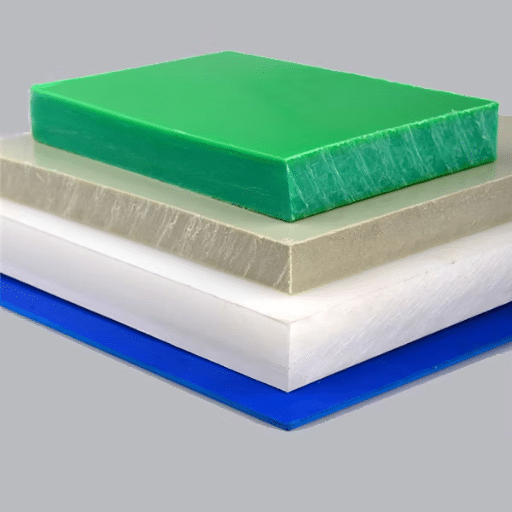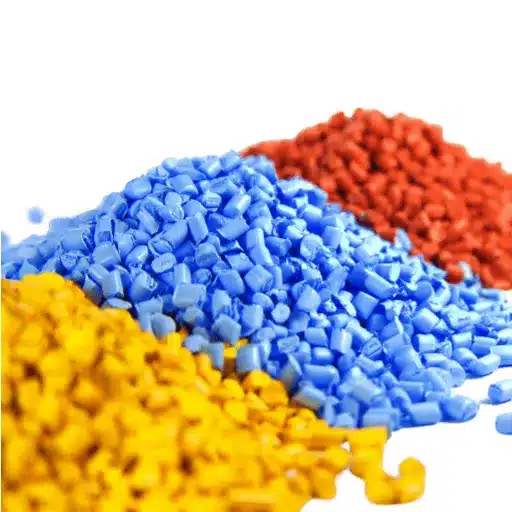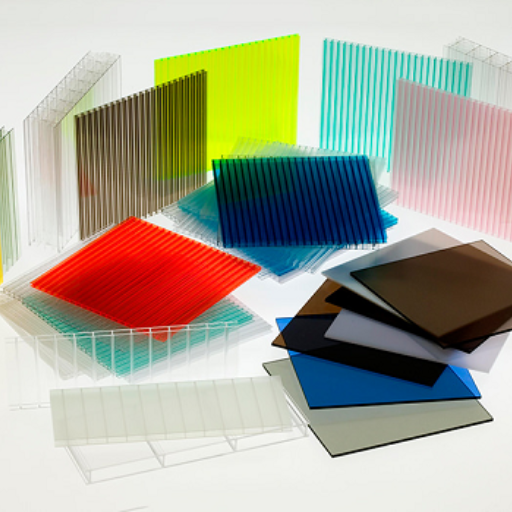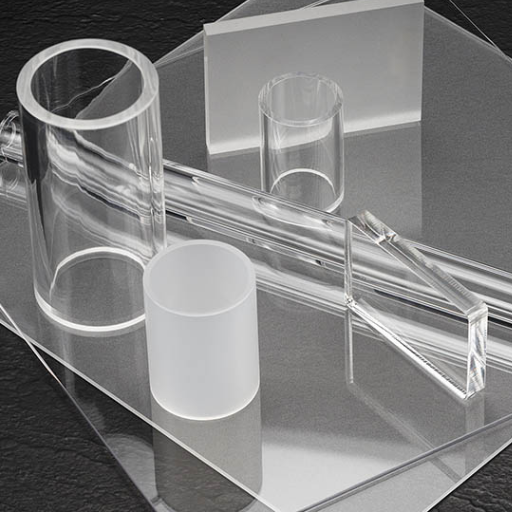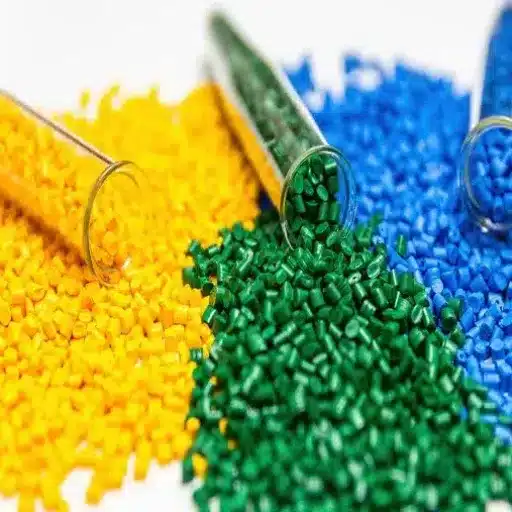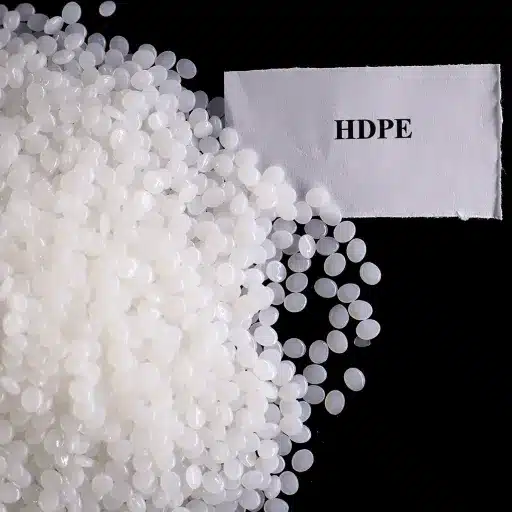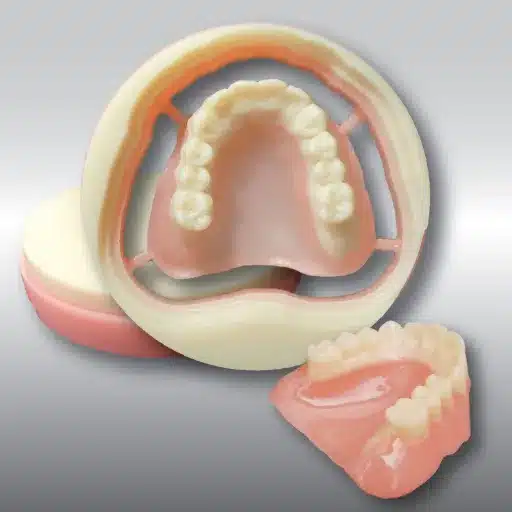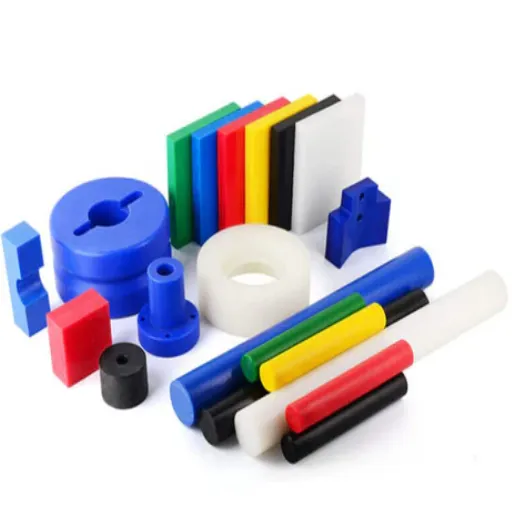Acrylonitrile Butadiene Styrene, which is more broadly referred to as ABS plastic, is a versatile material that has established itself as a significant player in a variety of industries from the automotive sector to 3D printing. One of its key properties that greatly impacts its performance and applications is the melting temperature. Knowing the melting point of ABS is vital not only for proper treatment and longevity but also for revealing its full capacity in intricate projects. It doesn’t matter if you are a very experienced engineer, a passionate do-it-yourselfer, or simply interested in the plastics’ science; this article will lead you step by step through the melting temperature of ABS, its importance, and how its applications are impacted. Prepare yourself for an exciting journey through the amazing world of ABS plastic and discover the temperature’s decisive role in the plastic’s success and use.
Introduction to ABS Plastic
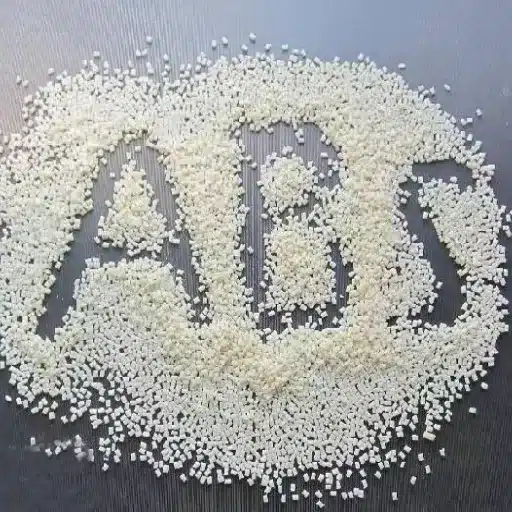
What is Acrylonitrile Butadiene Styrene?
Acrylonitrile Butadiene Styrene is a thermoplastic polymer, and if you want to call it in short then it is called ABS, it is an industrial great among others, for its strength, durability, and versatility. It consists of three main monomers: acrylonitrile, butadiene, and styrene. And these contribute to its unique properties. Acrylonitrile enhances chemical resistance and heat stability, butadiene improves toughness and impact resistance, while styrene gives the material a rigid structure along with a glossy surface. ABS is a lightweight material; it can be easily molded and can be recycled. Hence, it is the foremost option for applications like the automotive industry, electronic housing, toys like the LEGO bricks, and 3D printing besides all of that, its capability to work great with different temperatures and conditions has confirmed it as a versatile and reliable material.
🔬 ABS Monomer Composition
Acrylonitrile
Enhances chemical resistance and heat stability
Butadiene
Improves toughness and impact resistance
Styrene
Provides rigid structure and glossy surface finish
Properties of ABS Plastic
ABS plastic adores a delightful mixture of properties that make it the best material for a diverse range of applications. Meantime, it has great impact resistance, it takes up shock and is very mechanical stress resistant, thus no cracking or breaking of the material. Further, ABS possesses the merit of being thermally stable, which again has the effect of making it perform the same reliable way even in the temperature extremes of -20°C (-4°F) and 80°C (176°F). Its high tensile strength and stiffness can be attributed to the styrene content, which also gives the material its durable and structurally sound properties. Moreover, ABS is often noted for its shiny appearance, which adds to the allure of the products made from the material.
ABS is chemically resistant to some acids and alkalis thus enhancing its versatility. Nonetheless, there is a downside in that it is less resistant to strong solvents and UV light, which can cause the material’s degradation when it is exposed for long periods of time. The sustainability measures and progress in manufacturing have led to an increased use of ABS in recyclable applications thus making it more eco-friendly than some other plastics in terms of waste disposal. All these properties make ABS the most chosen material in different industrial fields such as the automotive, electronics, and consumer goods ones.
| Property | Description | Benefits |
|---|---|---|
| Impact Resistance | Absorbs shock without cracking | Durable under mechanical stress |
| Thermal Stability | Performs well from -20°C to 80°C | Reliable in temperature extremes |
| Tensile Strength | High strength and stiffness | Structurally sound applications |
| Surface Finish | Glossy appearance | Enhanced aesthetic appeal |
| Chemical Resistance | Resistant to acids and alkalis | Versatile applications |
Common Applications of ABS
ABS plastic’s excellent qualities have made it a very widespread option in different sectors. It is also chosen for the same reasons in many applications. Some of the most common uses of ABS are:
🚗 Automotive Industry
In the automobile industry, the ABS is widely used for making parts such as dashboards, steering wheels, interior trims, etc. Their combination of strength and moderate impact resistance makes them perfect for such applications; moreover, the ability to mold them into complex shapes allows for very creative designs.
📱 Consumer Electronics
A laptop, a smartphone, and a television are some examples of the devices whose housings are frequently made of ABS. Thanks to its impressive insulative properties, it not only keeps the sensitive internal parts cool but also shields them from physical damage.
🧸 Toys
ABS is the most preferred raw material for toys, and LEGO blocks are among the best-known examples. The properties of the material that include a perfect balance of hardness and smoothness coupled with colorful outspoken safe toys are the reasons for its popularity in this sector.
🏗️ Construction Materials
Protective helmets, pipes, and fittings are among the construction materials that are regularly made of ABS. Its lightweight and resistance to chemicals are the major factors of its being so often used in building.
🏠 Appliances
The exteriors of the modern home appliances like vacuums, mixers, and refrigerators, etc. made by using ABS, have a grand shelf life and pleasant finish.
ABS has maintained its position as a multifunctional material that pairs up with efficiency and thus never stops being inherently useful in all industrial sectors. Plus the recyclability of ABS that matches increasing sustainability policies fosters new promising environmentally friendly innovations.
Understanding ABS Melting Point
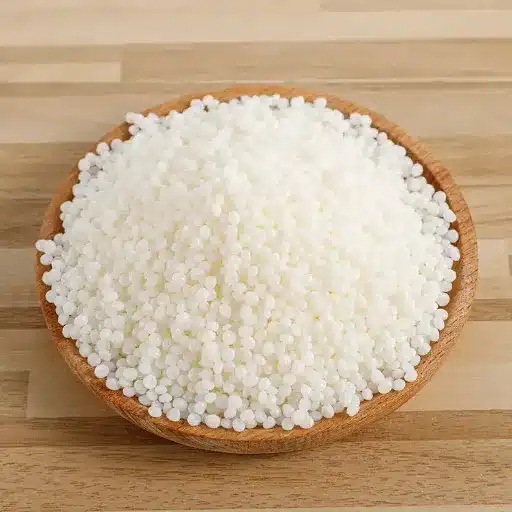
Typical Melting Temperature Range of ABS
ABS (Acrylonitrile Butadiene Styrene) is an amorphous polymer and therefore, it does not display a single sharp melting point. However, it provides a melting temperature range of 200°C to 250°C (392°F to 482°F). It is always dependent on the particular blend and the manufacturing process. The property of this material to withstand heat and still be tough has made it suitable for multiple use cases and industries. There were recent reports from dependable sources about the common practice of using 220°C (428°F) for injection-molding processing of ABS. This proficient temperature control shows the adaptability of ABS in the field of modern materials.
🌡️ Temperature Range Overview
- Melting Range: 200°C to 250°C (392°F to 482°F)
- Standard Processing Temperature: 220°C (428°F)
- Behavior: Softens gradually rather than sharp melting point
Factors Influencing the Melting Point of ABS
There are many factors that impact the melting point of ABS (Acrylonitrile Butadiene Styrene) such as its chemical makeup, how it was manufactured, and the addition of other substances. The main components, acrylonitrile, butadiene, and styrene, have a big influence on the temperature at which the polymer can be heated before it melts. For instance, higher styrene content in the polymer increases the rigidity and heat resistance, while higher butadiene content increases toughness but at the same time may slightly lower melting point. The presence of certain additives, like stabilizers or fillers, can also determine how ABS behaves at different temperature levels during processing and can, therefore, either enhance its heat resistance or affect the flow of the material during processing. New trends indicate that modern manufacturing methods have allowed the customization of ABS formulations according to thermal requirements, thus showcasing its versatility across industries. This strengthens the argument that both the inherent and the imposed factors are indispensable in revealing the melting behavior of ABS.
🔬 Chemical Composition
Monomer ratios affect thermal behavior and heat resistance
⚙️ Manufacturing Process
Production methods influence final thermal properties
➕ Additives & Fillers
Stabilizers and fillers modify heat resistance and flow characteristics
Comparing ABS Melting Point with Other Plastics
ABS (Acrylonitrile Butadiene Styrene) can be characterized as a plastic with mid-range thermal performance when compared with the other plastics, as it vaporizes around the glass transition temperature of 105°C (221°F), instead of a sharp melting point due to its amorphous structure. For example, Polypropylene (PP), a thermoplastic that is partially crystalline, shows a melting point of about 130°C (266°F) that is higher than that of ABS. On the contrary, Polystyrene (PS), which is another common material, has a much lower glass transition temperature of around 100°C (212°F) thus implying that ABS is more heat resistant than PS.
On the other hand, materials like Polycarbonate (PC) exhibit even higher thermal resistance, with a glass transition temperature of roughly 150°C (302°F), thereby surpassing ABS in heat stability and making PC a preferred choice for applications that need exceptional thermal performance. Low-Density Polyethylene (LDPE) on the other hand, has a melting point of 105°C to 115°C (221°F to 239°F), which is slightly overlapping with the thermal area of ABS but it does not have same mechanical strength and rigidity as ABS. The comparison clearly depicts that ABS is the best possible choice in terms of resistance to heat, toughness, and production, making it usable in more than one application area from car manufacturing to consumer electronics.
| Plastic Type | Glass Transition / Melting Point | Key Characteristics |
|---|---|---|
| ABS | Tg: 105°C (221°F) | Mid-range thermal performance, amorphous structure |
| Polypropylene (PP) | Mp: 130°C (266°F) | Higher melting point, partially crystalline |
| Polystyrene (PS) | Tg: 100°C (212°F) | Lower heat resistance than ABS |
| Polycarbonate (PC) | Tg: 150°C (302°F) | Superior thermal performance, exceptional heat stability |
| LDPE | Mp: 105-115°C (221-239°F) | Similar thermal range but lower mechanical strength |
Thermal Properties of ABS
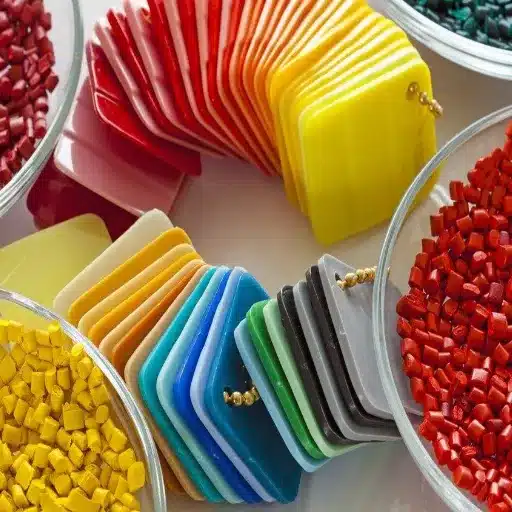
Glass Transition Temperature of ABS
The ABS glass transition temperature (Tg) is normally in the range of 105°C to 110°C (221°F to 230°F), which indicates the temperature at which ABS changes from a hard, glass-like state to a softer and more elastic state. During this temperature interval, the amorphous part of the material gets a higher degree of mobility, which may cause changes in the material’s mechanical properties and even in its being right for certain applications. This drawback has been regarded as an important factor to determine ABS performance considering various thermal conditions, especially in the case of industries where products should be able to bear moderate heat without losing their strength.
📐 Glass Transition Temperature (Tg) Explained
Temperature Range: 105°C to 110°C (221°F to 230°F)
State Change: Transitions from hard, glassy state to softer, elastic state
Impact: Critical for determining performance under thermal stress
Heat Deflection Temperature and Its Significance
The Heat Deflection Temperature (HDT) is a very important property for the evaluation of materials and their ability to resist heat under load without altering their dimensions or shapes. The HDT is the temperature at which the material starts to deform under the influence of a standardized load. HDT is a very important parameter in material selection for applications which are subjected to high temperatures, such as in the automotive industry (components), in electronics (casings) and in the machinery of the industrial sector. To put it another way, in the consumer electronics industry, high HDT guarantees the devices in the long run will not lose their structural integrity even in warm areas during the usage. It has been modernized and confirmed that engineering thermoplastics, such as ABS and reinforced composites, are being improved to have higher HDT values, thus, their application areas are being increased to the very hard places. Hence, if the manufacturers are able to realize and work with HDT as it is a part of the designing process then they can produce items that will conform to the specific performance and durability requirements during thermal stresses.
Thermal Stability of ABS in Different Conditions
Presenting its heat stability, ABS (Acrylonitrile Butadiene Styrene) is a plastic material that is very adaptable to different environments, making it suitable for a wide range of applications. Current research reveals that ABS can be used up to about 105°C without losing its structural integrity and quality, although this is highly dependent on the particular formulation of the material or whether or not any supplementary materials are added. On the other hand, at higher temperatures above this range, long-term exposure might lead to the material changing its shape or even breakdown. Moreover, various tests indicated that the addition of fillers such as glass or carbon fibers could considerably raise the Heat Deflection Temperature (HDT) of ABS, thus, it is properly equipped even in extreme thermal situations. ABS also does not give up its toughness and impact resistance at the lower temperature, which is another point to highlight its versatility according to the climate. This nature of ABS is a reason why it is always there as a reliable material on the map of thermal stress besides the solid industrial and consumer usage cases.
🔥 Thermal Stability Factors
- Operating Temperature: Up to 105°C without structural integrity loss
- Enhanced Performance: Glass or carbon fiber fillers raise HDT significantly
- Low Temperature: Maintains toughness and impact resistance in cold conditions
- Long-term Exposure: Temperatures above 105°C may cause deformation or breakdown
Applications of ABS in 3D Printing

What are the Reasons to Pick ABS Filament for 3D Printing?
Due to its toughness, heat resistance, and versatility, ABS filament is still one of the best choices for 3D printing. Recent trends and data have shown that ABS is among the most searched materials because it is capable of developing parts that are strong and durable enough to withstand mechanical stress, thus making it suitable for prototyping, functional parts, and even end-use products. Its higher heat deflection temperature (HDT) keeps prints from being deformed in hot working situations, and its great impact resistance keeps parts intact even when stressed. More to that, ABS allows for post-processing which can easily be done through sanding, painting, or chemical smoothing using acetone, thus providing quality finishes. However, a controlled printing environment is necessary not only to avoid warping but also to achieve top-notch results. Nevertheless, the price-to-performance ratio of ABS makes it a preferred material in sectors like automotive, construction, and consumer goods.
✅ Key Advantages of ABS in 3D Printing
3D Printing with ABS – Best Practices
Getting the best out of 3D printing with ABS needs the printing environment and settings to be properly managed. As ABS is prone to temperature changes, using a heated bed combined with an enclosed printing space is a must. Generally, the heated bed should be set to a temperature range of 90-110°C, which will help prevent warpage of the prints while the initial layers are being built up. On the other hand, keeping the enclosure closed helps avoid drafts and keeps the temperature of the area around the bed stable. A great nozzle temperature for the extrusion process is between 220-250°C, depending on the brand of ABS filament being used.
Another important technique is bed adhesion. If the bed is not properly prepared with the right tools, the ABS might not stick well to the bed, increasing the chances of lifting or warping. Layer lines can be diminished by post-processing such as acetone vapor for smoothing, which also adds aesthetic and durability benefits to the final product. Lastly, it is very important to have good ventilation during printing, because ABS fumes can be uncomfortable or even harmful in areas with insufficient air circulation. Implementing these best practices will guarantee a top-notch print alongside a safer and more efficient printing process.
🎯 Best Practice Guidelines
- Heated Bed Temperature: Set to 90-110°C to prevent warping
- Enclosed Printing Space: Maintain stable temperature, avoid drafts
- Nozzle Temperature: Set between 220-250°C based on filament brand
- Bed Adhesion: Use glue stick or ABS slurry for proper adhesion
- Post-Processing: Apply acetone vapor smoothing for professional finish
- Ventilation: Ensure adequate airflow to dissipate fumes safely
Typical Problems with ABS Printing
The use of ABS (Acrylonitrile Butadiene Styrene) in 3D printing is often associated with various issues that affect the quality and usability of the final product. Warping is one of these issues occurring frequently wherein the surface of the print might not be flat as the corners are lifted off the build plate in the wake of uneven cooling. To combat this lifting, a heated bed and suitable adhesion aids are needed such as glue sticks or ABS slurry, which can improve the situation. Moreover, the split between layers leading to cracking can happen when cooling is too rapid for the print, hence the importance of controlling the enclosure temperature to support adhesion of the layers.
One more problem that arises often is the clogging of the nozzle, which is most of the time caused by a combination of the unclean filament and incorrect temperature settings. The use of premium filament and a well-set printer can lessen the chance of this happening. Along with this, the release of fumes from ABS during the printing process is a major concern due to the unpleasant smell and health hazards that might occur if there is no proper ventilation. A well-ventilated workspace or installation of an air cleansing system would provide a safe printing environment.
In conclusion, dealing with poor bed adhesion or stringing issues can be the difference between a bad and a good print. Changing the nozzle height settings and fine-tuning the retraction settings can profoundly influence print quality. By systematically tackling these issues, ABS printing can produce prints that are strong, durable, and professional-grade.
| Common Issue | Cause | Solution |
|---|---|---|
| Warping | Uneven cooling, temperature changes | Heated bed (90-110°C), adhesion aids, enclosed space |
| Layer Cracking | Rapid cooling between layers | Controlled enclosure temperature, slower cooling |
| Nozzle Clogging | Unclean filament, incorrect temperature | Use premium filament, proper temperature settings |
| Fume Release | ABS material heating | Good ventilation, air purification system |
| Poor Bed Adhesion | Improper bed preparation | Adjust nozzle height, use adhesion methods |
| Stringing | Incorrect retraction settings | Fine-tune retraction settings |
Injection Molding with ABS Resin
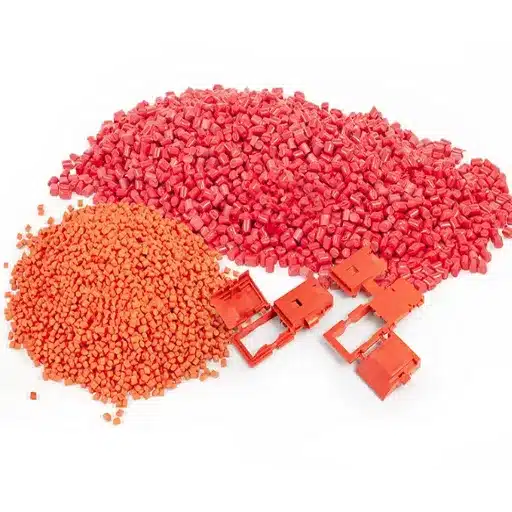
General View of the Injection Molding Process
Injection molding is a general manufacturing way that is notably dedicated to producing awesome plastic parts made from ABS resin. This technique pours the material into the mold cavity under high pressure after melting the plastic granules. The cooled and solidified part is then automatically removed, either ready for the next step or for its intended use. The high accuracy and speed of this method make it suitable for producing large quantities of products in industries that include cars, electronics, and household items.
The latest reports show that the continuous realization of new ways to utilize injection molding has also significantly reduced the amount of waste and increased the production rate. Just to mention, by using smart sensors and AI algorithms in the current machinery, it is now possible to monitor and make changes in real time, thus maintaining the quality of production while at the same time minimizing the operational downtime. Besides that, eco-friendly practices such as using recycled ABS material or installing energy-efficient machines are widely accepted, which points out the emphasis on environmental-responsible manufacturing. In summary, the use of injection molding with ABS resin is still in the process of being transformed while it is taking the path of performance, scalability, and a little environmental impact.
Advantages of Injection Molding with ABS
Among the various attributes of ABS (Acrylonitrile Butadiene Styrene), one of the main ones is that it offers the perfect combination of strength, durability, and stiffness, thereby allowing the manufacturers to come up with products that can endure the pain of time and still be structurally sound. ABS also has excellent heat resistance, which implies it can take high temperatures during the molding operation and also during service. In addition, its property of being light with a nice and shiny surface makes it the best candidate for being used in products that are specified for consumers like electronic gadgets, car inside parts, and home appliances.
What is more, ABS is very adaptable and goes well with many kinds of finishing techniques like painting, electroplating, and adhesive bonding, thus allowing a lot of customization and making it easy for the manufacturers to differentiate their products. Moreover, the material is less expensive than the alternatives and so manufacturers get the benefit of reduced production costs without affecting the quality levels. By using refurbished ABS and modern equipment, the manufacturers can lessen the effect on the environment, which goes hand in hand with the today’s sustainability objectives. Thus these pros keep ABS as a very important material for injection molding applications which in turn brings about innovation in different sectors.
⭐ Key Advantages Summary
- Perfect combination of strength, durability, and stiffness
- Excellent heat resistance for molding and service conditions
- Lightweight with attractive glossy surface finish
- Compatible with multiple finishing techniques
- Cost-effective compared to alternative materials
- Recyclable for environmental sustainability
Conflicts and Factors in Molding ABS
Using ABS (Acrylonitrile Butadiene Styrene) for injection molding gives the production of high-quality vacuum-formed products but this comes with challenges that the processors must take care of to optimize the performance and the cost at the same time. The foremost thing to deal with is controlling the temperature. ABS needs precise heating throughout to avoid the loss of material properties as well as to achieve the smooth flow required during the injection molding. Too high or too low temperatures can cause defects which take the form of warping, sink marks, or burn marks on the final products.
Another major issue is moisture absorption of the raw material. The plastic in its crystalline form acts like a sponge, and if the particles are not properly heated before molding, it can result in not only losing the mechanical properties but also ruining the surface quality. Besides that, meeting the uniformity of the quality of parts in intricate designs may prove to be difficult since the rate of contraction of ABS can be different according to the mold structure, thickness of walls, and cooling times.
Producers of the plastic have also to keep in mind the impact on the environment due to the production and disposal of ABS. Recycling is an option but if the discarded material is not managed properly it will still lead to environmental issues. Thus, going for recycled ABS and applying eco-friendly practices in production are strongly recommended to be in line with present-day environmental norms.
Facing such issues through good mold design, process control, and obeying the sustainability rules will enable the manufacturers to make the most out of the wide range of perks that ABS has to offer while at the same time cutting down on the possible drawbacks during the molding.
⚠️ Critical Challenges & Considerations
- Temperature Control: Precise heating required to prevent defects
- Moisture Absorption: Proper drying before molding essential
- Shrinkage Variability: Affects part uniformity in complex designs
- Environmental Impact: Proper recycling and waste management needed
Frequently Asked Questions (FAQ)
What is the melting point of ABS plastic and what is its behavior?
ABS plastic behaves quite differently in comparison to crystalline polymers. The latter have a specific melting point but ABS, being an amorphous thermoplastic, has a melting range instead, which is around 200 to 260°C depending on the formulation. When ABS is heated to a temperature above its glass transition (Tg), the polymer chains start moving and the material softens instead of melting to a specific temperature. ABS contains polybutadiene rubber domains that influence its melting characteristics and impact resistance along with the very fabrication process. Injection molding and 3D printing with ABS are referred to by a recommended processing temperature and melt temperature window rather than a single specific melting point. All this makes ABS suitable for tougher, but more difficult, post-processing applications compared to some crystalline plastics.
How does the glass transition temperature influence the melting point of ABS and the thermal stability of ABS?
The glass transition temperature (Tg) is the point where ABS switches from a brittle, glassy state to a soft, rubber-like one, and it is usually around 90-110°C, which is important for understanding the melting characteristics of ABS. When the temperature exceeds Tg, the movement of the polymer chains is much more active, and as a result, ABS, although an amorphous polymer, softens over a temperature range and the glass transition temperature plays a role in defining the working temperature and softening temperature. This behavior is the reason why ABS has better resistance to heat than PLA in many applications, because the Tg of PLA is lower. The designers consider the Tg when determining the heat deflection temperature and suitability for ABS parts in such applications where elevated-temperature environments exist. By modifying the processing temperature and formulation, it is possible to shift the Tg slightly to fit specific application requirements.
What are the recommended settings for melt temperatures for ABS in 3D printing?
The typical melting or extrusion temperatures for ABS filament used in 3D printing are generally around 230–260°C, but the exact melt temperature varies with the formulation and the printer hardware. Since ABS goes through a process of heating and extruding rather than melting at a single point, printers set a processing temperature window to guarantee continuous flow and adhesion of the layers. Extensive use of heated print beds and enclosures is common to help maintain the temperature changes and mitigate warping as ABS goes through softening over a temperature range. The aforementioned settings are a reflection of the polymer being a copolymer of styrene and acrylonitrile with sporadic polybutadiene, which also are the factors that affect viscosity and adhesion. Each user needs to modify the processing conditions according to the filament datasheets and the geometry of the part for the best results.
How do injection molding and 3D printing compare in terms of the processing of ABS resin?
Injection molding and 3D printing with ABS both need meticulous control of the processing temperature and melt temperature, but injection molding employs higher pressures and special molds to obtain the same dimensional accuracy consistently. Stable thermal stability is one of the benefits that ABS resin has in injection molding, along with the controlled cooling to avoid residual stresses; while on the other hand, ABS filament 3D printing has to cope with layer adhesion and warping through the use of bed temperature and enclosures. Because ABS is an amorphous thermoplastic, it does not melt sharply but rather, it softens over a temperature range, thus both processes depend on recommended processing conditions rather than a single specific melting temperature. Injection molding often fits well in the case of applications that require high volume and consistent mechanical properties, while 3D printing is suitable for prototyping and low-volume ABS parts. Understanding ABS processing and making it suitable for applications involves matching the method to the part requirements and material grade.
What is the effect of ABS thermal stability on the parts in temperature ranges that are their operating range?
ABS is a thermal stable material with reasonable thermal stability for many consumer and industrial applications however, it is glass transition and heat deflection temperature considerations that limit its usable operating temperature. Parts made of ABS material that have been subjected to long-term exposure to temperatures near or above Tg could end up being softened and losing their mechanical strength, and hence, manufacturers would consider operating temperature to be well below that of the softening temperature. Thermal stability can be improved by using additives or by choosing the grades of ABS specifically formulated for high heat resistance which will allow them to be more successfully used in places where high temperatures are sustained over longer periods. The polymerization composition of styrene and acrylonitrile and the presence of polybutadiene define many of the material’s thermal and mechanical attributes. Good design, right thickness, and favorable processing conditions are the keys to successful parts functioning as intended within the specified temperature range.
Reference Sources
Clemson University – Open Access Theses
A thesis discussing the mechanical properties of 3D-printed recycled ABS, including its melting temperature of approximately 200°C.
Analysis of the Mechanical Properties of 3D Printed Recycled ABS
North Carolina State University – BioResources Journal
A study evaluating the performance of 3D-printed ABS and carbon fiber-reinforced ABS, with insights into its melting point and thermal behavior.
Performance Evaluation of 3D-Printed ABS and Carbon Fiber Reinforced ABS
U.S. Environmental Protection Agency (EPA) – HERO Database
Research on the melt flow index of recycled ABS, analyzing its melting temperature and other material properties.
Melt Flow Index of Recycle ABS for Fused Deposition






